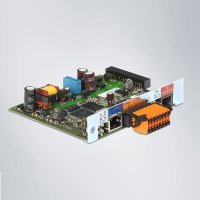
It goes without saying that in today’s day and age, mobile matters. The Pew Research Center estimates over 2.5 billion people worldwide own smartphones. Mobile technology has shown its prominence in the solar industry, where inverter manufacturers develop their own digital user experiences for PV owners eager to monitor the health of their systems. In the last few years, mobile technology has also enabled the rapid commissioning of PV systems with smartphone applications. In this article, we’ll explore the major players in the solar mobile app space to compare their respective functionalities and interfaces.
SolarEdge
SolarEdge’s monitoring platform app offers a sleek and easy-to-use interface, giving the user the ability to easily access energy production views based on day, week, month, year, or billing cycle. The Dashboard tab in the SolarEdge monitoring app captures essential details including a customized system photo, location, system size (kW), current weather, and real-time power production. The app even features an informative graph at the bottom, detailing comparative energy measured by three-time frames: month, quarter, and year.
For the environmentally curious, SolarEdge also offers two rotating sustainability metrics at the bottom: “CO2 Emissions Saved” (kg) and “Equivalent Trees Planted.” The Layout tab provides an interactive graphic of the system’s physical panel layout, allowing the user to select daily, weekly, monthly, or yearly production at the module level. This level of granularity gives a visual indicator for if any panels are underperforming.
In addition to their monitoring app, SolarEdge recently upgraded its HD Wave inverter line with the SetApp inverter, eliminating the LCD screen (a potential point of failure), and introducing the necessity for installers to commission systems using a smartphone. The inverter is activated and configured through SolarEdge’s SetApp mobile app through a three-step series.
Enphase
The process of activating, commissioning, and monitoring an Enphase microinverter system synthesizes three distinct software applications, all downloadable on iOS or Android devices. These include: Enlighten Manager, Installer Toolkit, and Enphase Enlighten.
For each system installed, the installer will need to create a new system activation using Enlighten Manager, which when completed assigns a specific location to the physical system. This will then allow the Envoy to transmit collected data through via the cloud, syncing it with an identifiable location in Enlighten. Enlighten Manager is only accessible by the installer who then undergoes a workflow meant to pair the physical equipment on site with the physical address. Once the activation is initiated and the installation is underway, the installer will create a paper array map with each microinverter’s physical location, serial number, and scannable bar code.
Enphase’s Installer Toolkit mobile app is then required to add the Envoy’s serial number to the activation and scan the microinverter barcodes. Once they are scanned, Enlighten will have all the information it needs to monitor the performance of the system.
Enphase’s Enlighten mobile app is a sophisticated and attractive piece of mobile software designed for homeowners to monitor their system’s performance. The app consists of multiple view tabs (Status, Energy, Array, Menu), and all information fits within one screen, so the user does not need to scroll. Information is displayed instantly and upon first glance. Enphase combines simplicity with sleek design in its bright color scheme and dynamic graphics.
SMA
SMA’s Sunny Portal app for iPhone and Android offers a simple and straight-forward interface featuring total yield graphs (measured by day, month, year, and total) as well as a “Plant Profile” with essential information about the PV system. The Plant Profile page includes a system photo, location, PV system power, annual production, CO2 avoided (in tons), and information regarding the modules, inverters, and communication mechanism. The app prioritizes functionality giving the user easy-to-read data and a basic understanding of system performance.
Fronius
Fronius’s Solar.web app provides the user an instant snapshot of energy yield over the last five days including the current date. On the right side of the dashboard, you’ll find sustainability metrics (a common theme in solar monitoring software) including measurements like tons of carbon dioxide saved, an equivalent number of trees planted, and amount of money saved. Fronius inverter commissioning is also easily explained within the Solar.web app after clicking on the inverter graphic on the home page. This will take you to the “System Monitoring” Setup Wizard showing a step-by-step series of directions to activate monitoring and communications for the inverter in use.
Mobile tech is the present and is certainly slated to continue its momentum into the future. With a diversity of inverter brands and their respective monitoring platforms and commissioning processes, it’s up to the installer to determine the best fit for workflow and customers. The industry is certainly trending towards increased smartphone usage as inverter manufacturers eliminate their LCD screens and Module-Level Power Electronics (MLPE) manufacturers streamline their commissioning processes. What this means is a greater demand for installers’ savviness when it comes to mobile technology. Those who embrace mobile will reap the benefits of sustained success into the future of solar.
Honorable Mentions:
